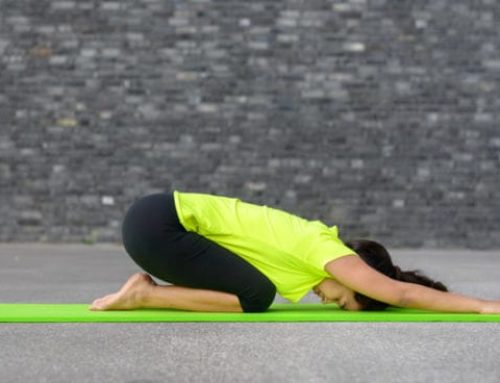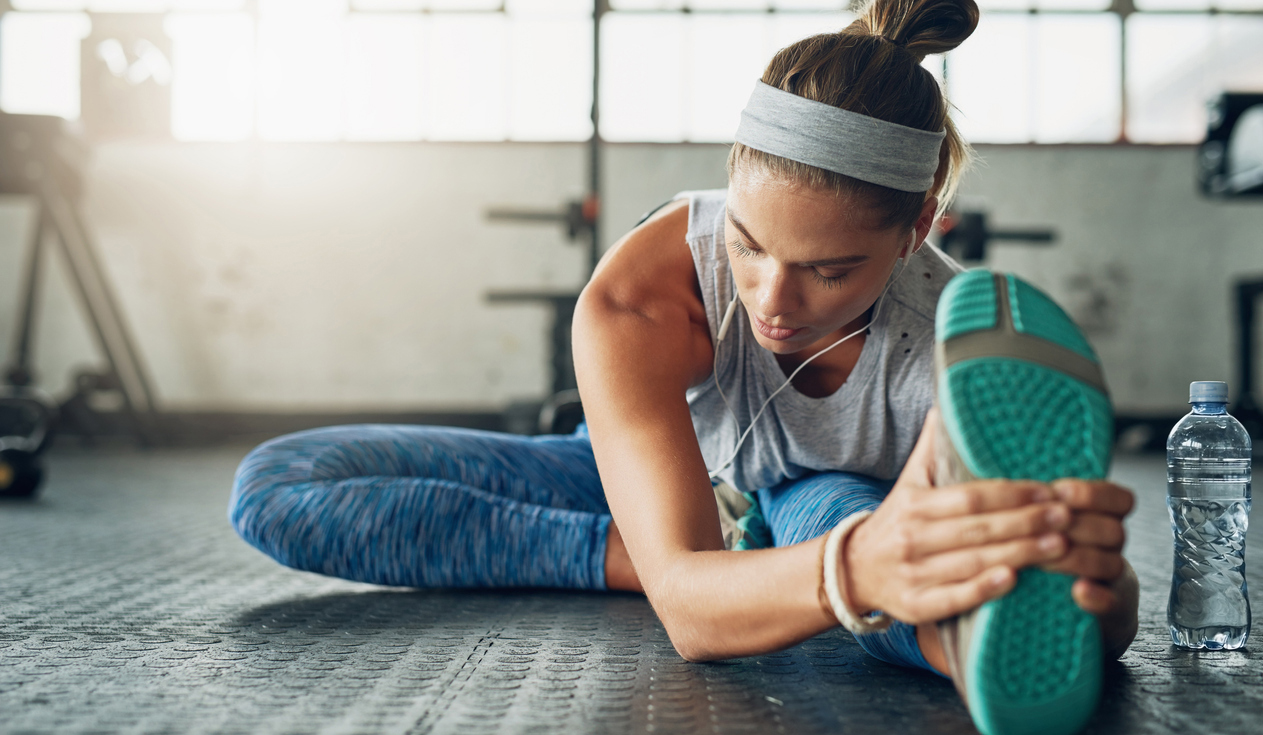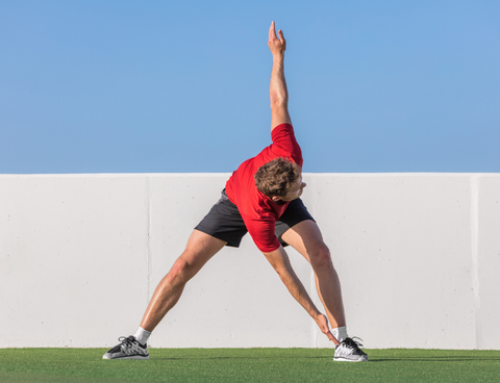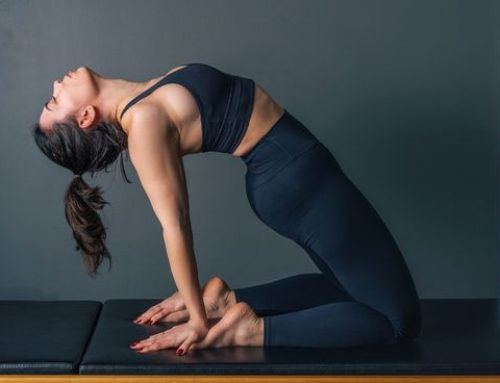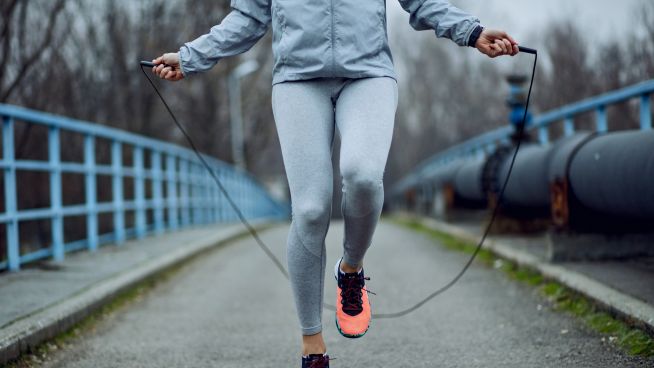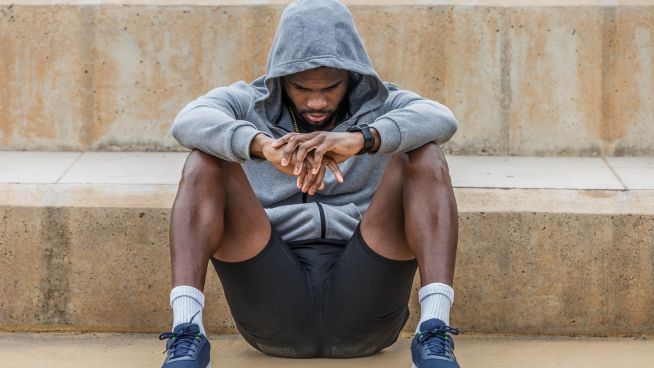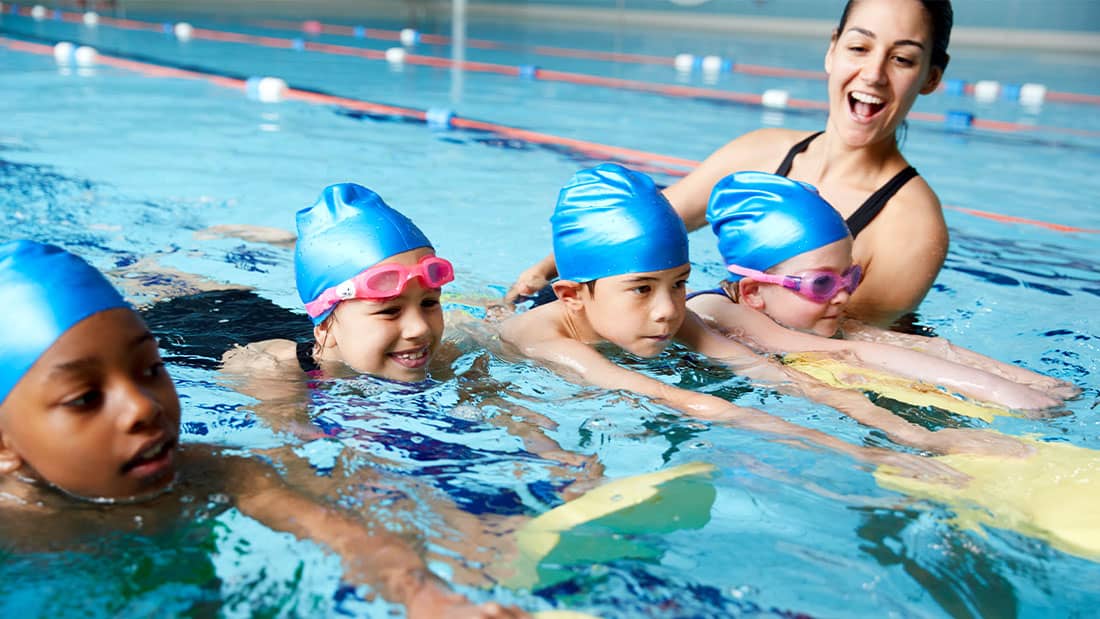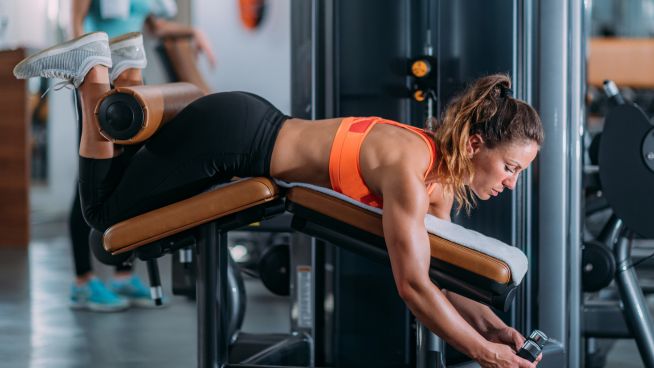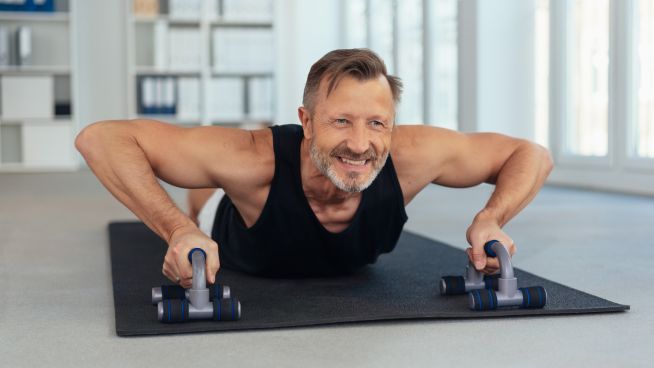Balance Exercises That Are Game-Changers
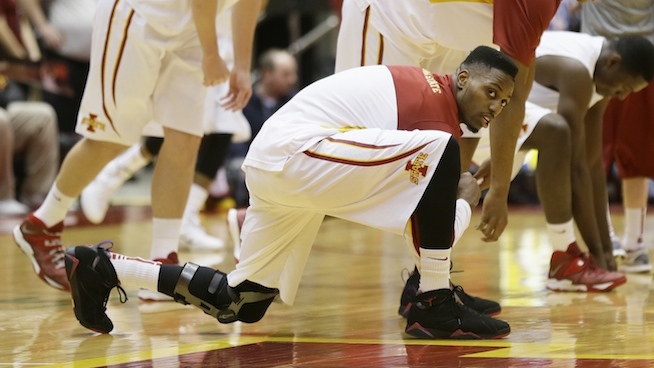
AP Images
Homeostasis is the body’s internal balance system. It monitors and changes blood pressure, body temperature and other vitals as necessary. It regulates movement and body position and prevents falling. All of this occurs unconsciously on an imperceptible level. Balance and balance exercises may entail more than you think.
The “balance system” consists of the vestibular system (inner ear), visual system (eyes) and proprioceptive and neuromuscular system (muscles, tendons and nerves). The feedback from these systems goes to the brain, which reflexively makes adjustments.
The greatest athletes adjust quickly and effectively when their systems are challenged. These adjustments allow them to make bicycle kicks, land double back flips and make 360-degree slam dunks, among other athletic feats.
The sensory organs at the ankle, knee, hip and shoulder joints sense stretching and the amount of muscular tension on tendons, allowing the body to make adjustments to project the joints and surrounding musculature. Beyond that information, the body perceives additional inputs about the direction it needs to move (cutting to get open and sprinting to the net), obstacles in the way (a tackler), and surface tension (slickness of a rainy field). It sends this data to the brain, which then quickly allows for adjustments.
Balance is a dynamic activity with constant corrections and adjustments. Athletes who can do this this quickly and effectively dominate their opponents.
Balance really is a game changer. Here is what it takes to dominate the balance system, train it, and take it to the field, court, or competition.
Requirements of Training for Balance
Below are some ways to get balanced and ready for competition.
Strength
Core strength is essential to optimal athletic performance and good balance. To maintain balance during a dynamic activity, you need core stability when your lower body changes direction. For balance, the core does not need to be dynamic or explosive as much as it needs to stabilize and hold the center of gravity near the center of mass.
The optimal way to train the core for balance and control is to practice yoga. Poses like Warrior 3, Crane and Side Plank are great movements to master.
Ankle Mobility
The proprioceptive system uses information from the joints to determine how far and how quickly the joint can stretch. Immobile ankles send less information and thus give you less margin for error. Having fully mobile ankles is essential to facilitate the athletic adjustments required to change direction without slipping, slowing down or falling over. Bodyweight exercises performed through the full range of motion can mobilize the ankles.
Overhead Squats, Goblet Squats and Lunges are good drills to perform for this.
Hip Mobility
Hip mobility is also necessary for balance. Olympic lifts are key examples. To effectively catch a Clean, your hips must be mobile. This is a balance activity, because as your hip depth changes, other parts of your body, including your core, must fire to maintain balance during the descent. Athletes with poor balance or poor hip mobility compensate by muscling the weight and catching it high versus going through the full range of motion.
Try Squat to Stands, Spiderman Crawls, Frog Squats and Scorpion Hip Rotations to improve hip mobility.
Rotary Stability
Compared to walking a tight rope, hitting a baseball is not the most challenging balance activity. However, when a baseball player swings, he begins with his weight shifting to his back leg and his front foot off the ground during the stride. This is followed by rotation of the hips timed with the upper half rotating, all while trying to track speed, spin and direction of the ball. Hitting that round ball squarely with a round bat requires all of the components of the balance system. To effectively generate power from this position, it is necessary to have rotary stability.
Train rotary stability with Med Ball Tosses with Rotation, Pallof Presses and Single-Arm Snatches.
Unstable Surface Training
This is imperative after an injury, especially for anyone who has had an ACL reconstruction. Early in the process, this happens statically: standing on foam and simply balancing on the injured leg. Transition to dynamic movements or play catch on the foam. The parameters you can change are two legs to one, eyes open to eyes closed, hard surface to moving surface. You can even use a Wii video game console to challenge balance. To progress further, work in sand.
Plyometrics in sand are the ultimate unstable exercises. Single-arm or sand-based Farmer’s Walks are also great ways to train balance dynamically.
Train With and Without the Eyes
It’s important to train balance without the use of the visual system from time to time. This is done commonly in the rehab setting, but is necessary to fully train the system in all athletes.
Here is a fun one. Walk backward on a treadmill. With a partner holding a small PVC pipe, try to maintain your balance while balancing a Ping-Pong ball on the top of the PVC pipe. To add to the challenge, gradually increase speed or change the incline on the treadmill. Be sure to have the emergency stop safety switch in place!
Train for the Unexpected
The parameters of a training session are generally measurable and decided ahead of time. When it’s game time, everything changes. The ball is moving, the defender is coming at you, the wind is blowing, the grass is wet. Here is where the most balanced athletes thrive.
Simple kid games that have changing parameters and quick starts and stops—like playing tag, red light/green light—modified for high-level athletes, are ways to train for the unexpected.
The athlete with the best balance has an edge, just like the athlete who runs the fastest, jumps the highest or works the hardest. Balance is a trainable system that requires focused attention similar to the other demands of prepping for competition.
Read More:
[cf]skyword_tracking_tag[/cf]RECOMMENDED FOR YOU
MOST POPULAR
Balance Exercises That Are Game-Changers

AP Images
Homeostasis is the body’s internal balance system. It monitors and changes blood pressure, body temperature and other vitals as necessary. It regulates movement and body position and prevents falling. All of this occurs unconsciously on an imperceptible level. Balance and balance exercises may entail more than you think.
The “balance system” consists of the vestibular system (inner ear), visual system (eyes) and proprioceptive and neuromuscular system (muscles, tendons and nerves). The feedback from these systems goes to the brain, which reflexively makes adjustments.
The greatest athletes adjust quickly and effectively when their systems are challenged. These adjustments allow them to make bicycle kicks, land double back flips and make 360-degree slam dunks, among other athletic feats.
The sensory organs at the ankle, knee, hip and shoulder joints sense stretching and the amount of muscular tension on tendons, allowing the body to make adjustments to project the joints and surrounding musculature. Beyond that information, the body perceives additional inputs about the direction it needs to move (cutting to get open and sprinting to the net), obstacles in the way (a tackler), and surface tension (slickness of a rainy field). It sends this data to the brain, which then quickly allows for adjustments.
Balance is a dynamic activity with constant corrections and adjustments. Athletes who can do this this quickly and effectively dominate their opponents.
Balance really is a game changer. Here is what it takes to dominate the balance system, train it, and take it to the field, court, or competition.
Requirements of Training for Balance
Below are some ways to get balanced and ready for competition.
Strength
Core strength is essential to optimal athletic performance and good balance. To maintain balance during a dynamic activity, you need core stability when your lower body changes direction. For balance, the core does not need to be dynamic or explosive as much as it needs to stabilize and hold the center of gravity near the center of mass.
The optimal way to train the core for balance and control is to practice yoga. Poses like Warrior 3, Crane and Side Plank are great movements to master.
Ankle Mobility
The proprioceptive system uses information from the joints to determine how far and how quickly the joint can stretch. Immobile ankles send less information and thus give you less margin for error. Having fully mobile ankles is essential to facilitate the athletic adjustments required to change direction without slipping, slowing down or falling over. Bodyweight exercises performed through the full range of motion can mobilize the ankles.
Overhead Squats, Goblet Squats and Lunges are good drills to perform for this.
Hip Mobility
Hip mobility is also necessary for balance. Olympic lifts are key examples. To effectively catch a Clean, your hips must be mobile. This is a balance activity, because as your hip depth changes, other parts of your body, including your core, must fire to maintain balance during the descent. Athletes with poor balance or poor hip mobility compensate by muscling the weight and catching it high versus going through the full range of motion.
Try Squat to Stands, Spiderman Crawls, Frog Squats and Scorpion Hip Rotations to improve hip mobility.
Rotary Stability
Compared to walking a tight rope, hitting a baseball is not the most challenging balance activity. However, when a baseball player swings, he begins with his weight shifting to his back leg and his front foot off the ground during the stride. This is followed by rotation of the hips timed with the upper half rotating, all while trying to track speed, spin and direction of the ball. Hitting that round ball squarely with a round bat requires all of the components of the balance system. To effectively generate power from this position, it is necessary to have rotary stability.
Train rotary stability with Med Ball Tosses with Rotation, Pallof Presses and Single-Arm Snatches.
Unstable Surface Training
This is imperative after an injury, especially for anyone who has had an ACL reconstruction. Early in the process, this happens statically: standing on foam and simply balancing on the injured leg. Transition to dynamic movements or play catch on the foam. The parameters you can change are two legs to one, eyes open to eyes closed, hard surface to moving surface. You can even use a Wii video game console to challenge balance. To progress further, work in sand.
Plyometrics in sand are the ultimate unstable exercises. Single-arm or sand-based Farmer’s Walks are also great ways to train balance dynamically.
Train With and Without the Eyes
It’s important to train balance without the use of the visual system from time to time. This is done commonly in the rehab setting, but is necessary to fully train the system in all athletes.
Here is a fun one. Walk backward on a treadmill. With a partner holding a small PVC pipe, try to maintain your balance while balancing a Ping-Pong ball on the top of the PVC pipe. To add to the challenge, gradually increase speed or change the incline on the treadmill. Be sure to have the emergency stop safety switch in place!
Train for the Unexpected
The parameters of a training session are generally measurable and decided ahead of time. When it’s game time, everything changes. The ball is moving, the defender is coming at you, the wind is blowing, the grass is wet. Here is where the most balanced athletes thrive.
Simple kid games that have changing parameters and quick starts and stops—like playing tag, red light/green light—modified for high-level athletes, are ways to train for the unexpected.
The athlete with the best balance has an edge, just like the athlete who runs the fastest, jumps the highest or works the hardest. Balance is a trainable system that requires focused attention similar to the other demands of prepping for competition.
Read More:
[cf]skyword_tracking_tag[/cf]
